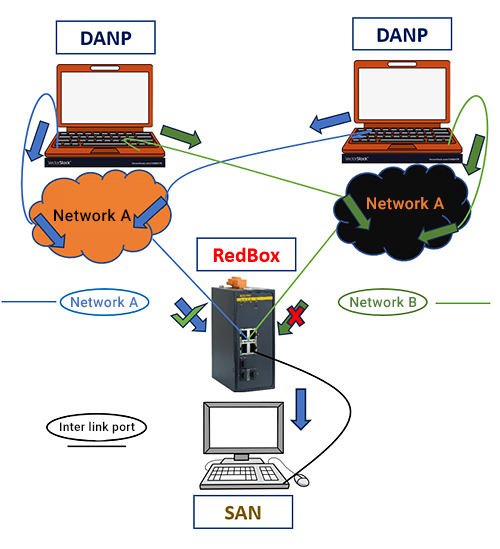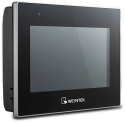
The use of network redundancy protocols, such as RSTP and MRP, does not always meet the requirements, especially when building networks at critical sites and substations. In such facilities, even a short-term loss of data transmission can have serious negative consequences. Network backup using these protocols involves changing the network topology, and it is this change that determines the recovery time.
In this regard, when creating redundant networks at critical sites, seamless redundancy protocols play an important role, such as PRP (Parallel Redundancy Protocol) - a parallel redundancy protocol and HSR (High-Availability Seamless Redundancy) - a seamless redundancy protocol with high availability for a ring topology . In such networks, redundancy occurs at the end nodes of the network and does not require changes to the topology. Redundancy is achieved by duplicating transmitted frames, which, in turn, are sent over two networks to the receiving device. As a result, if one of the communication lines breaks, one of the frames will always be delivered to the end device, and there will be no time required to rebuild the network and, as a result, it will be equal to zero. That is why such protocols are called seamless redundancy protocols.
Industrial switch of the Ruby3A-3G series, produced by Kyland, support PRP/HSR seamless redundancy protocols and are specifically designed to ensure high reliability of redundant networks.
Schematically, the PRP and HSR networks look like this:
PRP (Parallel Redundancy Protocol)

The following types of devices are used in the PRP protocol:
- DANP (Double Attached Node for PRP) is a device with two independent interfaces operating in the PRP system. DANPs interact with duplicate frames
- SAN (Single Attached Node) – end equipment with one network interface. To connect SAN devices to PRP networks, you must use RedBox
- RedBox (Redundancy Box) – a device with two independent interfaces, used to connect SAN devices to PRP networks
HSR (High-availability Seamless Redundancy - ring topology)

The HSR protocol defines the following device types:
- DANH (Double Attached Node for HSR) is a device with two independent interfaces connected to the HSR ring
- SAN (Single Attached Node) – end equipment with one network interface. To connect SAN devices to the HSR ring, you must use RedBox
- RedBox (Redundancy Box) - a device with two independent interfaces, serves to connect SAN devices to the HSR ring and transmits duplicate packets in both directions of the ring
- Quadbox - a device for combining several HSR rings into a common network
The main difference between these redundancy devices is that when using the PRP/HSR protocols, both data transmission paths are considered primary and do not require time to redirect traffic between them in the event of a break.
Currently, most end devices do not support such protocols. Therefore, to solve this problem, RedBox devices are used, such as Ruby3A-3G оseries switches produced by Kyland. They connect to end devices via the Inter-link port and create a redundant network via ports A and B.
In addition, Ruby3A-3G switches can act as QuadBox devices and connect two HSR networks in a ring topology, providing seamless data transfer between them.
Support for PRP/HSR Coupling technology allows you to create integrated networks between the PRP and HSR protocols, expanding the topology and setting up a redundant network for more complex tasks.
Among others, RedBox from Kyland has support for such standards as:
- IEEE1588v2
- IEEE 1613
- EN 50121-4
Ruby3A-3G is available in two modifications, differing in power requirements:
- Ruby3A-3G-HV – supporting 3 combo ports with speeds of 3x1000Base-X SFP, 100Base-X, 100/1000Base-T(X) RJ-45 and one power supply 110-220VDC (85-264VAC/77-300VDC)
- Ruby3A-3G-L2-L2 – supporting 3 combo ports with speeds of 3x1000Base-X SFP, 100Base-X, 100/1000Base-T(X) RJ-45 and two power supplies 24-48VDC (18-72VDC)
Also, this series of switches is presented in an extended operating temperature range from -40 to +85 degrees.
In addition to the RedBox Ruby3A-3G series, which are specifically designed for building PRP/HSR communication networks, Kyland's product catalog includes modular chassis SICOM3028GPT, which support work with built-in expansion modules SM6.6-HSR/PRP-GE-0.5U and SM6.6-HSR/PRP-GX-0.5U and can act as a full-fledged RedBox switch.

